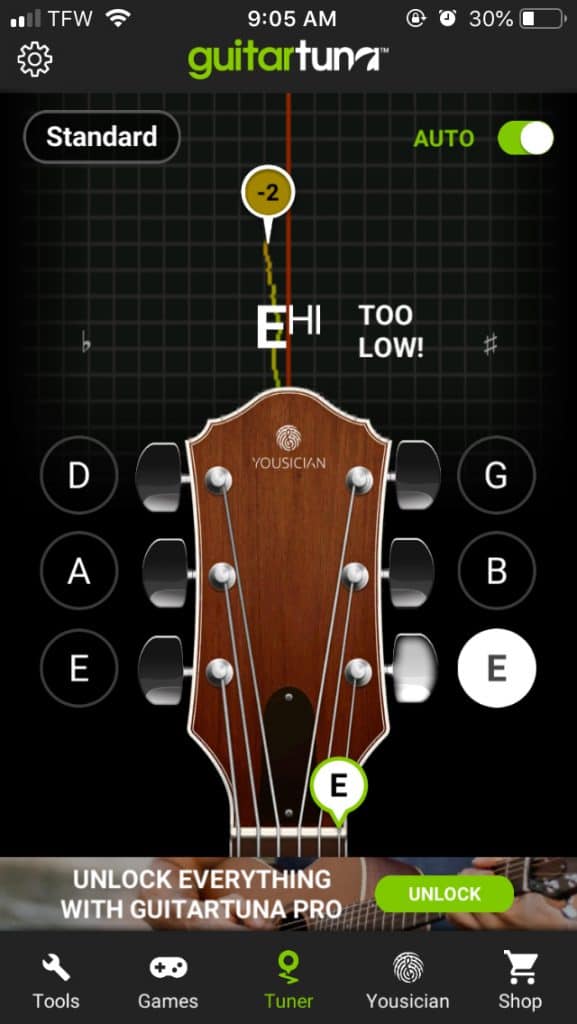

Start with the Bb 2nd valve and then do the F second valve. I like to start with the second valve since that’s just a half step below the notes we just tuned. The 4th partial is even easier to bend sharp or flat, though, so you’ll need to pay more attention to playing in the center of the horn’s resonance for these lower notes. For some horns, the 3rd space C is a bit weird (we don’t use that range of the F horn much), so you may need to use the middle C (4th partial) and G. Use the second line G and 3rd space C (6th and 8th partials of the open F horn) and adjust the F horn tuning slide to bring those notes close to in tune.

Next, you’ll need to tune the open F horn.Don’t bend the pitch with your lips (or right hand).

When tuning, make sure to find the center of resonance and adjust the main tuning slide to bring that center of resonance to “in tune”. Keep in mind the 6th partial (3rd space C) is a slightly sharp harmonic, so it’s okay if they aren’t both perfect. Use 3rd space C and top line F (the 6th and 8th partials of the open Bb horn), and adjust the main tuning slide until those notes are both in tune. First, you’ll need to tune the open Bb horn.Okay – with those two things out of the way, here’s the best tuning procedure for most double horns. You can find some of my recommendations on my Apps for Musicians page. In general good tuning apps are less expensive and more flexible than a dedicated tuner. While you can certainly buy inexpensive tuners for $20-$50, I generally recommend you stick with an app. If it’s not correct, the pitch will vary widely from low to high registers if it’s not consistent, taking the time to tune will be undone whenever the right hand is placed in a slightly different position. Make sure that your hand position is both correct and consistent. The right hand has more control over the pitch of the horn than any slide.In general, 6th and 8th partials are probably the best to use unless specific extremes need to be tuned. If the notes are low, they are easy to bend with the lips too high and they can tend to be sharp if the embouchure is overly tense. You want to pick harmonics that are relatively in tune and are in a middle register. Pick the notes you are using to tune carefully.but here are some things to keep in mind no matter how your tuning slides are arranged This standard 8-slid arrangement means you need to tune the horn in a specific order. You can find the exact slide arrangements (and which slide does what) at the bottom of this page. Most double horns feature at least the following slides: the main tuning slide, an F tuning slide, and six slides for the valves (3 each for the F and Bb side). Tuning horns with independent Bb tuning.
Tuning app note c how to#
This page should hopefully not only give you an idea of how to tune the double horn, but also give an overview of what the different slide arrangements for different models of French horns. Even if you know that you’re flat or sharp, knowing the exact slide to adjust can feel like a coin toss! This is especially true considering the variety of models of French horns, with different tuning slide arrangements. Tuning the French horn (and intonation in general) is not the easiest concept to understand for some students. This post was inspired by a post made by John Ericson over on his Horn Matters site.


 0 kommentar(er)
0 kommentar(er)
